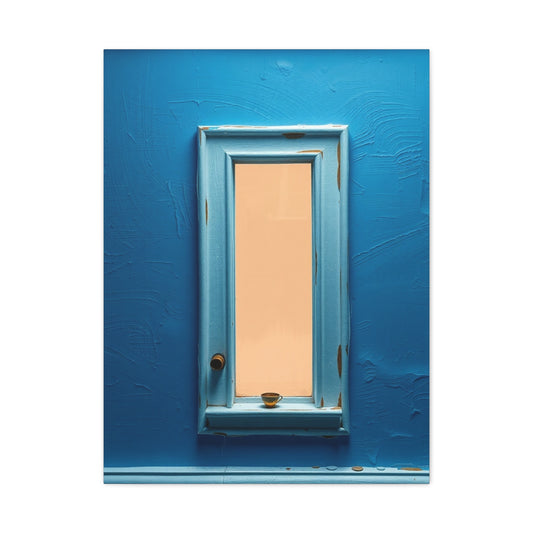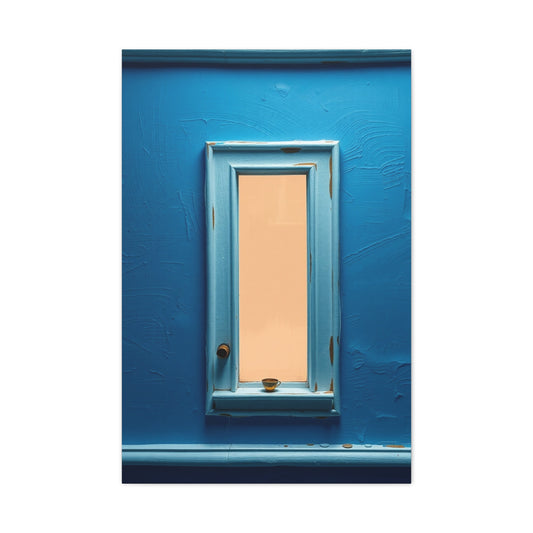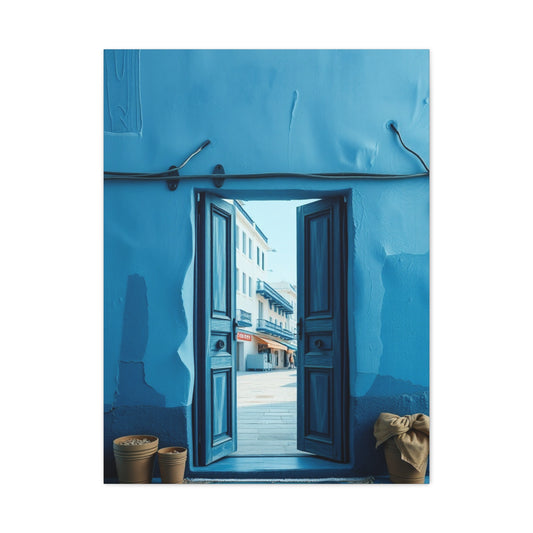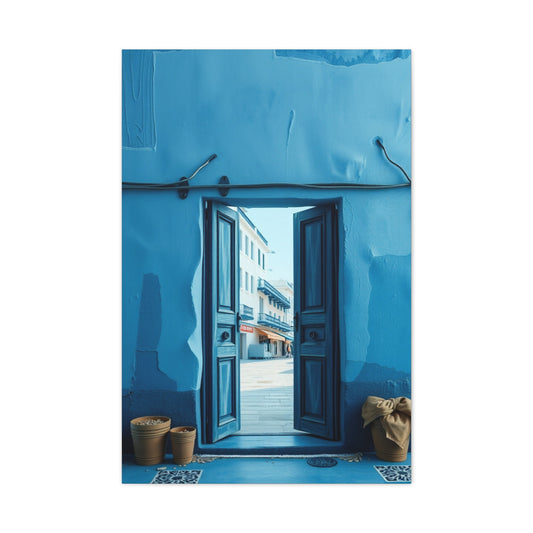The bedroom has always been regarded as the most personal space within any home. It is not only a place where one rests but also a sanctuary that speaks volumes about an individual’s personality, lifestyle, and choices. A well-planned bedroom can transform the quality of daily life, offering serenity after hectic hours of routine responsibilities. Unlike other areas of the home that are often designed for visitors, gatherings, or functional chores, the bedroom is an intensely private domain. Every element, from wall finishes to furniture placement, contributes to creating an environment that nurtures relaxation, rejuvenation, and balance. One of the most powerful yet underestimated aspects of bedroom design is wall treatment. Wall textures do more than provide visual appeal; they set the tone, dictate the mood, and create depth in a room. A flat painted wall may look neat but can lack dimension and vitality, whereas textured surfaces introduce character and transform a static wall into a living feature. From subtle matte finishes to dramatic geometric panels, wall textures hold the power to make bedrooms extraordinary. Bedrooms of the present era no longer follow monotonous design choices. With innovation in materials, lighting, and finishing techniques, homeowners can now experiment with layers, patterns, and textures. This shift from simplicity to sophistication allows walls to become the focal element in design narratives. Whether the goal is to achieve a rustic farmhouse appeal, a luxurious contemporary retreat, or a vibrant youthful atmosphere, textured walls offer versatility and timeless allure. They act as silent storytellers, reflecting not just design trends but the essence of the people inhabiting the space.
Importance of a Well-Designed Bedroom
A well-designed bedroom is far more than a decorated enclosure; it is a carefully curated retreat that significantly impacts comfort, mood, and overall well-being. In the modern context, where fast-paced living often leaves little time for rest, the importance of a nurturing bedroom environment cannot be overstated. The textures, tones, and finishes chosen within the space resonate with emotions and influence mental states.
Emotional Resonance of Bedroom Interiors
Colors and textures wield profound psychological influence. A muted grey wall accentuated with golden highlights creates a sophisticated aura, whereas geometric shapes with LED illumination deliver energy and vibrancy. When walls are treated as expressive surfaces, they contribute to emotional balance. A bedroom adorned with rustic brick conveys grounded stability, while velvety upholstery fosters warmth and comfort. These subtle but powerful cues influence how restorative one’s sleep feels and how refreshed mornings begin.
Role of Texture in Defining Comfort
Comfort in bedrooms extends beyond mattresses or pillows. The tactile and visual quality of the walls contributes immensely to overall coziness. Upholstered textures create an enveloping feel, cocooning inhabitants in softness. On the other hand, raw brick finishes inject authenticity and a connection with natural elements. Textures prevent monotony, breaking the uniformity of plain walls by introducing dimension. Their interaction with natural and artificial light generates shadows, producing a dynamic quality that evolves throughout the day.
Aesthetic Continuity with the Rest of the Home
The bedroom should not feel like an isolated design project; it should complement the overall aesthetic language of the house. A minimalist apartment pairs beautifully with sleek wall panels, while a countryside villa aligns naturally with distressed brick. Creating continuity ensures visual harmony, but introducing unique textural elements in the bedroom distinguishes it as a personal retreat. A single accent wall can carry the weight of character while maintaining consistency with broader design themes.
Enhancing Functionality Through Design
Textures and finishes can serve functional roles in addition to being decorative. Panels can integrate ambient lighting, offering both style and utility. Textured paints in darker shades reduce glare, creating a calming environment conducive to rest. Upholstered surfaces provide sound insulation, enhancing privacy and comfort. Raw textures like brick or stone can regulate thermal comfort, keeping rooms cooler in warm climates. By addressing functionality, textures become investments rather than mere embellishments.
Long-Term Value of a Thoughtfully Designed Space
Well-chosen textures hold timeless appeal. They transcend fleeting trends and remain relevant as design sensibilities evolve. Unlike superficial makeovers, textured finishes offer depth that continues to engage the eye. This adaptability means that bedding, furniture, or accessories can be updated without requiring a complete overhaul of wall finishes. Durable materials also ensure longevity, making the bedroom an enduring sanctuary that adapts effortlessly to changing lifestyles.
Psychological and Lifestyle Benefits
The environment in which one sleeps has direct implications for mental health and productivity. Bedrooms with thoughtful textures promote relaxation, reduce stress, and even influence creativity. A soothing upholstered wall encourages tranquility, while a bold mural can ignite imagination. In today’s context where mental wellness is paramount, design decisions that elevate bedroom experiences contribute directly to a healthier lifestyle.
Bedroom Design Ideas for Small Spaces
Designing a small bedroom requires ingenuity, but size constraints need not diminish the impact of design. In fact, compact rooms often benefit most from creative textural strategies that expand perception and introduce depth. By using walls strategically, homeowners can make limited areas appear spacious, functional, and aesthetically engaging.
Maximizing Wall Potential
In small rooms, every surface matters. Vertical textures, such as elongated wooden slats or tall geometric panels, create the illusion of height. Light-hued textured paints amplify brightness and openness. Subtle brick cladding or minimalistic panel designs introduce dimension without crowding the space. An accent wall with a refined pattern directs attention strategically, allowing the room to appear larger than its physical boundaries.
Multi-Functional Surfaces
Small bedrooms thrive on multi-purpose solutions. Wall panels can incorporate hidden storage, while upholstered surfaces double as headboards. Murals with expansive landscapes or abstract depth give the illusion of extending space beyond its limits. Integrating functionality with design ensures that every inch is optimized while maintaining elegance.
The Role of Light and Shadow
Light enhances the perception of spaciousness. Textures respond dramatically to illumination, producing shadows that create layers of visual depth. Backlit geometric walls or recessed lighting against paneling bring sophistication while making compact rooms appear dynamic. Reflective finishes paired with natural sunlight ensure brightness throughout the day, preventing small rooms from feeling boxed in.
Keeping Balance in Compact Rooms
Balance is essential in small spaces. Overuse of bold textures may overwhelm the room. Instead, restraint with a focus on one striking element achieves harmony. A matte textured paint in neutral tones or a single wall with distressed brick ensures that character is added without sacrificing spaciousness. Simplicity paired with a touch of texture yields the most effective results in compact bedrooms.
Modern Bedroom Design Trends
Contemporary bedroom design emphasizes individuality, functionality, and artistic expression. Walls are central to this evolution, transitioning from passive partitions to commanding design statements. Modern trends embrace bold experiments while maintaining a sense of balance.
Geometric Inspiration
Geometric patterns symbolize rhythm and modernity. Triangles, diamonds, or intersecting lines break monotony, creating striking focal points. When illuminated with concealed LED strips, these patterns acquire a futuristic dimension. Soft embossed geometric designs, on the other hand, add subtle sophistication suitable for minimalist interiors. This versatility makes geometry a cornerstone of modern wall textures.
Raw and Rustic Appeal
The timeless charm of rustic finishes continues to dominate design trends. Exposed brick or distressed stone infuses authenticity, grounding bedrooms in natural simplicity. When paired with metallic shelving, wooden flooring, or industrial lighting, these textures strike a balance between rustic warmth and modern chic. They appeal particularly to those who desire an earthy yet stylish retreat.
Personal Expression Through Murals
Murals represent individuality and creativity. Unlike generic wallpapers, murals convey personality—whether through abstract art, favorite quotes, or symbolic imagery. In bedrooms, murals act as emotional extensions of the resident’s identity. They establish a one-of-a-kind narrative, ensuring that no two bedrooms feel alike. This form of personal expression resonates deeply with modern design principles that value uniqueness.
Luxurious Wall Panels
Wall panels embody refinement in contemporary design. Large, gold-toned panels set against muted grey walls exude grandeur, while matte-finished panels cater to understated elegance. By pairing them with sleek side tables and layered lighting, homeowners can craft luxurious yet functional environments. Panels can also be customized with integrated lighting or storage, making them practical as well as decorative.
Upholstered Elegance
Upholstered walls have gained momentum for their cozy and luxurious qualities. Velvet panels or padded squares transform bedrooms into warm, intimate spaces. These walls coordinate seamlessly with soft furnishings, carpets, and drapes, creating a unified cocoon-like atmosphere. They also enhance acoustics, reducing noise and improving serenity. This trend resonates with modern desires for comfort-driven elegance.
Textured Paint for Bold Statements
Textured paints remain enduring because of their adaptability. From smoky matte blacks to sandy beige or plaster-inspired finishes, they can replicate natural textures or create dramatic moods. When paired with minimalist furniture, dark textures exude power, while lighter finishes establish tranquility. Their versatility makes textured paints suitable for a range of themes—from coastal serenity to edgy urban lofts.
Integration of Sustainable Materials
Sustainability is a rising priority in design. Textured finishes made from eco-friendly materials, reclaimed wood panels, or natural stone cladding combine aesthetics with responsibility. These choices reflect a conscious lifestyle while delivering timeless beauty. Incorporating sustainable textures ensures that modern bedrooms are not just stylish but also environmentally attuned.
Technology and Innovation in Textures
Technology now allows experimentation with 3D wall panels, modular patterns, and smart finishes that change appearance with lighting. Interactive textures that shift in tone depending on illumination provide dynamic character to bedrooms. This innovation adds a futuristic edge, merging design artistry with technological advancement.
Luxury Bedroom Design Inspirations
Luxury bedroom design is often associated with elegance, comfort, and a refined aesthetic that transforms an ordinary space into a sanctuary of indulgence. Creating a luxurious environment begins with the thoughtful selection of elements that blend both functionality and grandeur. High-quality materials such as silk, velvet, leather, or polished wood instantly add depth and refinement. The tactile experience of these materials creates a sense of comfort that goes beyond visual appeal, making every touch part of the atmosphere of extravagance. A luxury bedroom thrives on statement pieces. Oversized upholstered headboards, intricately designed chandeliers, or handcrafted bedside tables can serve as focal points. These elements should not overwhelm the space but instead anchor the overall design with a sense of opulence. For instance, a velvet tufted headboard combined with satin bedding offers a classic touch, while crystal lighting adds sparkle and subtle drama. Architectural detailing further enhances a luxury aesthetic. Crown moldings, tray ceilings, or wall paneling introduce layers of dimension and sophistication. When paired with soft lighting and muted tones, these design elements create harmony and balance. Flooring also plays a crucial role in luxury interiors, with marble, hardwood, or plush carpets contributing to the elevated look. In a luxury bedroom, lighting is not just practical but an instrument of ambiance. Layered lighting using chandeliers, sconces, and concealed LED strips ensures the room maintains a warm yet grand atmosphere. Dimmer systems add flexibility, allowing the room to shift from radiant brilliance to intimate serenity. The color palette in luxury spaces tends to revolve around neutrals like ivory, taupe, or warm beige, often complemented by jewel tones such as emerald, sapphire, or burgundy for dramatic flair. Incorporating textures, from high-thread-count linens to thick area rugs, enriches the layering and offers a tactile luxury that is both comforting and stylish. Personalization is key in luxurious interiors. Art collections, bespoke furniture, or curated accessories can infuse character into the bedroom. A handwoven tapestry or a rare sculpture not only reflects individual taste but also elevates the room’s uniqueness. Ultimately, a luxury bedroom is not simply about expense but about creating a cohesive environment that feels like an indulgent retreat, balancing comfort with timeless sophistication.
Cozy and Minimalist Bedroom Design Tips
Minimalist bedroom design emphasizes simplicity, functionality, and calmness. It is the art of creating a welcoming retreat with fewer items, clean lines, and a soothing ambiance. The cozy element comes into play when minimalism is softened with textures and thoughtful details that invite relaxation rather than austerity. One of the first steps in crafting a minimalist bedroom is reducing clutter. This means choosing only the essential furniture pieces and keeping surfaces clear. A minimalist bed frame, a simple wardrobe, and a nightstand with clean lines are often all that is necessary. When arranged with intent, this simplicity encourages peace of mind and supports restful sleep. Color schemes in minimalist bedrooms generally lean toward neutral tones such as white, gray, or soft beige. These hues evoke serenity and allow natural light to expand the sense of space. Adding warm undertones or gentle pastels, such as blush or sage, ensures the environment does not feel cold or sterile. Minimalist does not mean bare. Instead, it focuses on quality over quantity. Introducing natural textures like wooden furniture, cotton bedding, or linen curtains makes the room feel warmer and cozier. A woven throw, a sheepskin rug, or a knitted blanket brings softness that counters the rigid simplicity. Lighting is another important aspect of minimalist bedroom design. Natural light should be maximized through large windows or sheer curtains. Artificial lighting should remain unobtrusive, with sleek floor lamps or recessed lighting providing subtle illumination. Warm-toned light bulbs are preferable, as they add to the cozy effect without disturbing the minimalist aesthetic. Personal touches, though kept minimal, are vital for making the space feel inviting. A single piece of artwork, a small indoor plant, or a curated stack of books can provide character without overwhelming the design. Plants such as succulents or peace lilies also enhance air quality, contributing to both comfort and health. Storage solutions in a minimalist bedroom should be discreet yet effective. Built-in wardrobes, under-bed storage, or floating shelves allow for functionality while maintaining a streamlined look. The goal is to reduce visual noise and encourage relaxation. The key to merging coziness with minimalism lies in balance. By carefully selecting textures, colors, and essential décor elements, the bedroom becomes a haven of tranquility where simplicity meets warmth. Such a space not only improves sleep quality but also creates a mental refuge from the chaos of everyday life.
Color Schemes for Bedrooms
The choice of color in bedroom design greatly influences the mood, atmosphere, and even the quality of rest. Each color carries psychological effects, and selecting the right palette requires an understanding of both aesthetic harmony and emotional resonance. Neutral color schemes, such as whites, creams, and soft grays, remain timeless choices. They provide a calm foundation that can be accented with richer shades. These tones create a sense of openness and are especially beneficial for smaller rooms as they visually expand the space. Accents such as wooden furniture or metallic finishes can add contrast and prevent the design from feeling monotonous. For those seeking a more energizing environment, bold hues can be incorporated thoughtfully. Deep blues encourage serenity and are often linked with restful sleep, making them ideal for bedroom walls. Greens symbolize renewal and balance, creating a refreshing and restorative environment. Warm tones such as terracotta, mustard, or burnt orange can add a cozy dimension but should be used as accents to avoid overwhelming the space. Monochromatic schemes, where variations of a single hue are layered, can produce a sophisticated effect. A bedroom designed in varying shades of gray, paired with textures such as wool or suede, exudes understated elegance. Alternatively, a palette of blues in different intensities creates depth while maintaining harmony. Color blocking is another effective technique, where two or more contrasting shades are applied strategically. For example, a navy wall combined with crisp white bedding and golden accents introduces drama without sacrificing comfort. Accent walls allow bold choices to shine without dominating the entire room, offering flexibility for experimentation. The role of color in luxury or minimalist bedrooms can vary. In luxury designs, jewel tones such as emerald or ruby add grandeur, while metallic gold or silver accents highlight sophistication. Minimalist bedrooms, on the other hand, thrive on whites and neutrals but can be enlivened with subtle earthy shades. Lighting plays an important role in how colors are perceived. Natural daylight highlights true shades, while artificial lighting can either warm or cool the effect of a chosen palette. This makes it essential to test colors in different lighting conditions before finalizing them. Personal preference remains central in choosing color schemes. A calming pastel palette may soothe one individual while another may find joy in vibrant contrasts. The key is aligning the colors with emotional comfort, ensuring the bedroom becomes a reflection of personality while promoting relaxation.
Choosing the Right Bedroom Furniture
Furniture selection forms the backbone of bedroom design, determining both the functionality and overall aesthetic of the space. The right choices balance practicality with style, ensuring the bedroom serves as a comfortable retreat while maintaining visual harmony. The bed, as the centerpiece, deserves the most attention. Beyond size considerations, its design impacts the entire mood of the room. A platform bed with clean lines suits modern interiors, while a canopy bed adds a sense of drama and romance. Upholstered headboards enhance comfort for those who enjoy reading or lounging, while wooden frames exude natural charm and durability. Mattress quality is equally critical, as it directly influences sleep health. Investing in a supportive, high-quality mattress ensures not only comfort but also long-term wellness. Nightstands provide convenience and symmetry. Their size should complement the bed without overwhelming the room. Minimalist designs work well in smaller spaces, while ornate versions enhance luxurious bedrooms. Functionality is key, with storage drawers offering practicality in addition to aesthetic appeal. Wardrobes must be chosen with attention to both capacity and style. Sliding-door wardrobes are space-efficient, whereas walk-in closets embody opulence. The choice of material—whether polished wood, lacquered surfaces, or glass—can shift the ambiance from traditional to contemporary. Dressers and chests of drawers are equally vital for organization, helping maintain the clean and uncluttered look that enhances relaxation. For added charm, accent furniture such as benches, armchairs, or vanity tables can be introduced. These pieces contribute to both functionality and design depth. A bench at the foot of the bed adds convenience, while an accent chair creates a cozy corner for reading. Lighting should also be integrated with furniture planning. Bedside lamps, pendant lights, or wall-mounted fixtures not only provide illumination but complement the furniture’s role in creating balance. Materials and finishes should be consistent across furniture pieces to ensure harmony. For example, combining walnut wood with brushed brass accents ties the elements together elegantly. Beyond aesthetics, ergonomics and durability must remain priorities. Furniture that supports posture, provides adequate storage, and withstands daily use ensures the bedroom is both beautiful and enduring. Custom-made or modular furniture options offer tailored solutions, especially in irregularly shaped rooms or compact spaces. By carefully considering design, functionality, and quality, bedroom furniture becomes more than utility. It shapes the overall identity of the room, contributing to a restful environment that feels both personal and timeless.
Bedroom Layout and Space Planning
The foundation of a successful bedroom design lies in the layout and space planning. This stage determines how each element interacts within the room, ensuring functionality and visual harmony. A well-planned bedroom layout maximizes comfort, circulation, and aesthetics while respecting the architectural structure of the space. The bed naturally becomes the focal point of most layouts, and its placement has a strong influence on both functionality and energy flow. Ideally, the bed should be positioned where it receives natural light but avoids direct glare. Designers often suggest placing it against the longest wall to anchor the space while ensuring a clear line of sight to doors and windows, as this provides psychological comfort and spatial balance. Circulation is another vital consideration. A bedroom should allow effortless movement, with enough clearance between furniture pieces to prevent a cramped feeling. This is particularly important in smaller spaces, where multifunctional furniture or built-in storage can optimize the available area. For large bedrooms, zones can be created within the layout. A reading corner with a chair and side table, or a dressing area near the wardrobe, adds functionality and prevents wasted space. Furniture arrangement should consider symmetry where possible, as it enhances order and visual calmness. Matching nightstands and lamps on either side of the bed create balance, while asymmetrical arrangements can be introduced for a modern or eclectic feel. Attention to proportion ensures that pieces are neither too large to overwhelm nor too small to feel insignificant within the room. The role of windows and natural light must also be factored into planning. Window treatments should not obstruct light or airflow. Positioning furniture to complement rather than block natural openings increases both comfort and energy efficiency. Technology integration is another modern consideration in layout planning. Outlets, charging stations, and cable management should be planned to avoid clutter. Smart lighting systems, discreetly integrated, ensure convenience without disrupting aesthetics. Flooring and rugs also influence space planning. An area rug under the bed, extending beyond its edges, can visually define the central zone and tie the room together. Rugs also add softness underfoot, enhancing the bedroom’s comfort. Ultimately, bedroom layout and space planning should balance practical necessities with emotional well-being, creating a space that feels ordered, restful, and reflective of personal lifestyle.
Lighting Ideas for Bedrooms
Lighting plays a transformative role in bedroom design, influencing not only functionality but also the emotional atmosphere. The right lighting plan blends practicality with mood, ensuring the bedroom serves as both a restful sanctuary and a versatile living space. Natural light is the first and most important layer. Maximizing daylight through large windows, skylights, or glass doors creates a connection with nature while enhancing the sense of spaciousness. Sheer curtains allow soft diffusion, while blackout blinds provide control for restful sleep. Artificial lighting must be layered to accommodate different needs. Ambient lighting, typically from ceiling fixtures or recessed lights, provides general illumination. This should be soft and evenly distributed to avoid harsh contrasts. Warm-toned bulbs work best in bedrooms as they mimic natural sunset light, encouraging relaxation. Task lighting focuses on specific activities such as reading or dressing. Bedside lamps, wall-mounted sconces, or pendant lights positioned near the bed ensure sufficient light for reading without disturbing a partner. Dressing areas benefit from bright, shadow-free lighting to aid grooming and outfit selection. Accent lighting introduces drama and highlights focal points. LED strips beneath furniture, spotlights on artwork, or backlit headboards add a layer of sophistication. These subtle details can elevate the bedroom from functional to atmospheric. Statement fixtures such as chandeliers or sculptural pendant lights provide both illumination and visual impact. When chosen thoughtfully, they act as art pieces that enhance the overall design theme. Dimmers are essential in bedroom lighting, offering flexibility to adjust brightness levels according to activity and mood. The ability to shift from bright task light to soft ambiance supports both productivity and relaxation. Incorporating smart lighting technology adds convenience and personalization. Systems that allow control via smartphone or voice command enable users to tailor lighting scenarios instantly. For example, a bedtime setting may gradually dim lights to promote restful sleep, while a morning setting brightens the room to stimulate alertness. Color temperature is another factor influencing the atmosphere. Warm white light (2700K–3000K) creates intimacy and calmness, while cooler white light (4000K–5000K) may be suitable for functional tasks. Layering different color temperatures within the same space allows adaptability. Decorative lighting accessories such as lanterns, string lights, or candles add charm and intimacy. They can be rotated seasonally to refresh the ambiance. Overall, lighting in the bedroom should harmonize utility with serenity, creating an environment that caters to daily routines while fostering rest and relaxation.
Bedroom Storage Solutions
Storage is often the most underestimated yet essential component of bedroom design. A well-thought-out storage plan not only enhances functionality but also contributes to a tidy, serene atmosphere, which is vital for relaxation. The key to effective bedroom storage lies in maximizing available space while maintaining visual harmony. Built-in wardrobes are among the most efficient solutions, as they can be tailored to fit the dimensions of the room. Customizable interiors with adjustable shelves, pull-out drawers, and dedicated compartments for shoes or accessories allow for personalized organization. Sliding doors are particularly useful in compact bedrooms, as they save floor space compared to swinging doors. Under-bed storage is another clever solution, especially in smaller spaces. Drawers, roll-out boxes, or hydraulic lift beds provide ample room for storing seasonal clothing, bedding, or items not used daily. This hidden storage ensures functionality without disrupting the room’s aesthetics. Multifunctional furniture further enhances efficiency. Beds with integrated headboard storage, nightstands with drawers, or ottomans that double as storage boxes serve dual purposes. Such pieces combine practicality with style while keeping clutter out of sight. Open shelving can be incorporated for displaying books, artwork, or decorative items, but it requires careful curation to avoid visual chaos. Floating shelves provide additional storage without occupying floor space and can be arranged in creative patterns for both utility and design. Wardrobe organizers such as hanging racks, baskets, and dividers enhance the functionality of existing furniture. These accessories help maximize capacity while ensuring items remain accessible and neatly arranged. Small bedrooms benefit greatly from vertical storage solutions. Tall wardrobes, wall-mounted cabinets, or shelving units utilize vertical space, drawing the eye upward and making the room feel taller. Niches built into walls, particularly around the bed, provide discreet storage and can even be illuminated for a stylish effect. In luxurious bedrooms, walk-in closets serve as both storage and a personal retreat. They can include dedicated islands for accessories, mirrored walls, and integrated lighting, combining practicality with indulgence. Minimalist storage solutions prioritize discretion. Hidden compartments, handle-less wardrobes, and neutral finishes blend seamlessly into the design, maintaining the calm aesthetic. Organization systems should be designed for long-term functionality, ensuring every item has its place. By balancing hidden storage with carefully chosen display pieces, bedrooms can remain clutter-free while still reflecting personality. Ultimately, smart storage is not merely about keeping things organized but about preserving the bedroom as a serene sanctuary.
Bedroom Decoration and Accessories
Decoration and accessories breathe life into a bedroom, transforming it from a purely functional space into a reflection of personality and style. The careful selection and placement of these elements elevate the overall ambiance, making the bedroom feel complete and inviting. Textiles are central to bedroom decoration. Bedding, curtains, rugs, and throws introduce softness and layers of texture. High-thread-count sheets provide comfort, while patterned duvets or quilts add visual interest. Layering different fabrics, such as cotton, velvet, and linen, creates richness and depth. Curtains not only control light but also contribute to the design scheme. Floor-length drapes in luxurious fabrics such as silk or velvet evoke elegance, while light linens maintain a breezy, casual atmosphere. Rugs define zones within the room and add tactile warmth underfoot. Accessories such as cushions and throws offer opportunities to experiment with color and pattern without overwhelming the overall design. Seasonal updates with new cushion covers or blankets can refresh the look effortlessly. Wall art is another important accessory. Paintings, prints, or photography serve as focal points and express individuality. Gallery walls with curated collections introduce dynamism, while a single large artwork can anchor the room with bold impact. Mirrors are both decorative and functional. Positioned strategically, they reflect light, enhance the sense of space, and create a luxurious effect. Frames in metallic finishes or natural wood further integrate them into the design. Plants are timeless accessories that bring vitality and freshness. From large potted palms to small succulents on nightstands, greenery introduces organic beauty and improves indoor air quality. Decorative lighting accessories, such as table lamps with artistic bases or pendant lights with intricate designs, add character while serving practical purposes. Personal items such as books, travel souvenirs, or handcrafted objects enrich the bedroom with authenticity. They make the space feel lived-in and personal rather than staged. Care should be taken to avoid overcrowding, as too many accessories can create clutter. A curated approach ensures that each piece contributes meaningfully to the overall design. Decorative trays on dressers or nightstands can organize small items while adding a touch of elegance. Scented candles or diffusers also enhance the sensory experience, complementing visual design with aromatic comfort. Ultimately, accessories and decoration complete the story of a bedroom. They infuse charm, individuality, and a sense of belonging, ensuring the space feels not just stylish but deeply personal.
Bedroom Flooring and Wall Design Ideas
Flooring and wall design are two fundamental elements that define the mood and functionality of a bedroom. They form the canvas upon which all other design elements are layered, making their selection crucial to the final outcome. Flooring, in particular, needs to balance durability, comfort, and aesthetics. Wooden flooring is one of the most popular choices, offering warmth, timelessness, and adaptability across design styles. Hardwood floors in lighter tones evoke Scandinavian simplicity, while darker woods bring richness and gravitas to the room. Engineered wood is a practical alternative for those who desire the charm of natural wood but seek resilience against humidity and wear. Laminate flooring offers the look of wood at a more affordable price point, making it an accessible option without sacrificing style. Tiles, especially ceramic or porcelain, introduce versatility with countless colors, patterns, and finishes. They are particularly useful in regions with warmer climates, where cool surfaces enhance comfort. Natural stone such as marble or slate adds luxury and uniqueness, as each slab carries distinct veining and textures. However, stone floors require regular maintenance and investment, making them more suitable for high-end bedroom designs. Carpeting provides unmatched softness and acoustic benefits, creating a cocoon-like environment. Wall-to-wall carpets work well in colder climates, while area rugs layered over hardwood or tile add visual definition and warmth. For modern trends, hybrid flooring solutions are gaining popularity. Vinyl planks that mimic wood or stone offer durability and moisture resistance, making them ideal for versatile bedrooms. Eco-conscious homeowners increasingly prefer sustainable materials such as bamboo or cork, which combine environmental responsibility with unique visual character. Wall design is equally significant in shaping the bedroom atmosphere. Painted walls remain classic, but textured paints elevate the experience by adding depth. Techniques such as sponge painting, ombré blending, or metallic finishes can create distinctive moods. Wallpapers continue to be a favorite for their ability to introduce patterns, motifs, and personality. From subtle nature-inspired prints to bold graphic designs, wallpapers offer limitless creativity. Accent walls are often used to create a focal point, with one wall treated differently using paint, wallpaper, or texture. Wooden wall cladding introduces warmth and coziness, while stone cladding conveys rustic elegance. Upholstered walls, though unconventional, add softness and a luxurious touch. Panels in velvet or suede make the space feel inviting and intimate. Brick walls, whether exposed or faux, carry industrial charm and suit both modern loft-inspired designs and rustic country styles. Murals transform walls into works of art. Custom illustrations, abstract compositions, or scenic landscapes personalize the bedroom, making it truly unique. Mirrors on walls amplify light and space, while strategically placed moldings or trims add architectural detail. For a harmonious design, flooring and wall treatments should complement each other rather than compete. Light floors paired with darker walls create balance, while uniform tones across surfaces evoke calmness. The interplay of materials such as wood, fabric, and stone enhances depth, creating a layered and sophisticated bedroom environment.
How to Mix Textures and Patterns in Bedroom Design
The art of mixing textures and patterns is essential for creating visually compelling bedrooms that are both comfortable and stylish. Without thoughtful layering, a bedroom risks appearing flat or monotonous. The challenge lies in combining diverse elements without overwhelming the senses. Textures refer to the tactile quality of materials, while patterns are the visual repetition of shapes, lines, or motifs. Bringing them together harmoniously requires balance, proportion, and creativity. Start by identifying a base texture that will dominate the room, such as smooth painted walls, polished wood floors, or plush upholstery. This foundation establishes cohesion, allowing other textures to build upon it. For example, a sleek wooden floor can be softened by a shaggy rug, while crisp cotton bedding may be layered with velvet cushions or knitted throws. Contrast is key to successful textural layering. Pairing rough with smooth, matte with glossy, or hard with soft prevents monotony and adds richness. Stone walls contrasted with silk drapes, or metallic light fixtures paired with linen curtains, generate interest through juxtaposition. Patterns bring rhythm and dynamism, but they must be curated carefully. A good strategy is to choose one dominant pattern—such as geometric prints, florals, or stripes—and support it with smaller, more subtle motifs. For instance, a bold patterned wallpaper can be complemented by cushions featuring delicate prints in similar hues. Scale also matters. Large patterns on walls or bedding should be balanced by smaller-scale prints on accessories. This interplay prevents visual chaos and maintains harmony. Color coordination is central when mixing textures and patterns. A cohesive palette ties everything together even when different materials and motifs are used. Neutral backgrounds such as whites, grays, or beiges provide flexibility, allowing colorful patterns and bold textures to stand out without overwhelming the space. Layering is best approached gradually. Begin with larger elements like walls, flooring, and bed coverings, then add smaller accents such as cushions, throws, and artwork. This method allows experimentation and adjustment until the right balance is achieved. Lighting plays a supportive role in highlighting textures. Directional light emphasizes roughness or relief, while diffused light softens contrasts. For instance, spotlighting a textured headboard enhances its depth, while ambient lighting ensures overall comfort. Modern design trends embrace eclectic combinations, encouraging homeowners to mix seemingly contradictory elements. A velvet-upholstered wall paired with minimalist wooden furniture, or industrial brickwork softened by floral cushions, reflects individuality and confidence. The key lies in moderation. Overloading a space with too many patterns or overly complex textures risks visual clutter and restlessness. Strategic restraint ensures each element contributes without overshadowing others. Seasonal adjustments offer opportunities to refresh textures and patterns. Lightweight linens and airy patterns suit summer, while heavier fabrics like wool and deeper tones enhance winter coziness. Accessories make these transitions easy without altering core elements. In essence, mixing textures and patterns is about storytelling. Each layer adds a chapter to the narrative of the room, weaving together tactile pleasure and visual intrigue that make the bedroom both inviting and unique.
Bedroom Design Mistakes to Avoid
Even the most ambitious bedroom designs can falter if common mistakes are overlooked. Awareness of these pitfalls ensures a harmonious, functional, and restful environment. One of the most frequent errors is neglecting proportion. Oversized furniture in a small bedroom overwhelms the space, while undersized pieces in a large room appear lost and insignificant. Careful measurement and scale consideration are essential before investing in major items. Another mistake lies in poor lighting planning. Relying on a single overhead fixture creates harsh shadows and insufficient flexibility. Bedrooms require layered lighting for tasks, ambiance, and accents. Ignoring natural light is equally problematic, as heavy curtains or poorly placed furniture can block sunlight and make the room feel gloomy. Color missteps can also undermine design. Overly dark colors in small bedrooms create a closed-in feeling, while excessively bright or mismatched hues may induce restlessness. A balanced palette that supports relaxation is vital. This does not mean avoiding bold colors entirely but using them strategically as accents rather than dominant shades. Clutter is a major design downfall. Insufficient storage leads to disorganization, which disrupts the serene atmosphere of the bedroom. Furniture with hidden compartments, built-in wardrobes, and decluttering practices help maintain order. Positioning mistakes also occur frequently. Beds placed directly in front of doors or under low windows can create discomfort both functionally and psychologically. Layout planning should respect flow, accessibility, and comfort. Ignoring acoustics is another overlooked issue. Bedrooms situated near noisy areas benefit from rugs, upholstered walls, or heavy drapes that absorb sound. Neglecting this can compromise the restorative function of the space. Over-accessorizing can also diminish elegance. While accessories add charm, too many items clutter surfaces and distract from the main design. A curated approach with fewer but meaningful pieces maintains focus. Neglecting texture is a subtler but equally significant mistake. Flat, uniform surfaces create dullness, whereas layered textures enrich depth and comfort. Incorporating varied materials prevents monotony and adds sensory pleasure. Ignoring maintenance when choosing materials can result in frustration. High-maintenance finishes such as delicate fabrics or porous stone may not suit every lifestyle. Selecting durable yet stylish materials ensures longevity without constant upkeep. Failing to personalize the bedroom is another misstep. Designs that follow trends blindly without reflecting the occupant’s personality may feel cold and impersonal. A successful bedroom balances universal comfort with individual expression. Overlooking ergonomics is a final but crucial point. Furniture height, mattress firmness, and circulation paths must align with comfort and usability. A design that prioritizes style over human needs ultimately falls short of being a true sanctuary. By avoiding these common mistakes, bedrooms can achieve their intended purpose: a balanced blend of relaxation, functionality, and individuality.
Writing
Inspiring Bedroom Makeovers and Transformations
A bedroom makeover is often more than simply replacing furniture or painting the walls. It represents a shift in atmosphere, mood, and personal expression. Transformations in bedrooms allow individuals to refresh their surroundings and breathe new life into spaces that may have become monotonous or uninspiring. Whether the bedroom is large or small, luxurious or modest, every makeover begins with a thoughtful understanding of what the occupant desires. Bedrooms are deeply personal sanctuaries, and transforming them requires balancing functionality with emotion.
One of the most powerful ways to approach a makeover is to redefine the bedroom’s focal point. Many rooms feel bland because they lack a central element that captures attention. A transformation could mean introducing a statement headboard crafted from carved wood or upholstered fabric that instantly changes the room’s presence. Similarly, adding a feature wall with textural paint or wallpaper in subtle yet impactful patterns can create a dramatic shift. Such transformations require careful attention to proportion so that the new design feels harmonious rather than overwhelming.
Another aspect of makeovers is color rejuvenation. Many bedrooms remain stuck in dull palettes that fail to reflect the personality of the inhabitants. Transformations often involve experimenting with new hues that align with the individual’s lifestyle. Soft neutrals can create serenity, while deep shades like navy or forest green inject a sense of elegance and depth. The addition of accent tones through cushions, throws, or even rugs ensures the room doesn’t feel flat. These subtle touches form a cohesive design language that elevates the atmosphere without requiring large-scale changes.
Lighting also plays a central role in bedroom transformations. Harsh, outdated fixtures can make even the most stylish furniture appear lifeless. A makeover can integrate layered lighting, combining pendant lamps, bedside sconces, and floor lamps to bring warmth and variety. Installing dimmers offers flexibility, allowing the room to adapt from functional brightness in the morning to a soothing ambiance at night. A transformation often becomes noticeable not just through physical changes but also through the emotional impact that thoughtful lighting creates.
Furniture replacement or repositioning is another hallmark of bedroom makeovers. Sometimes a complete overhaul isn’t necessary; instead, rearranging the layout breathes new life into the space. Shifting the bed to a different wall can alter the perception of size and flow. Replacing bulky wardrobes with sleek modular units introduces efficiency and modernity. Even introducing multifunctional furniture like storage ottomans or foldable desks can transform small bedrooms into versatile havens. The transformation lies not just in appearance but in usability, ensuring the room serves as both a retreat and a practical living space.
Textiles hold a quiet yet powerful ability to transform. A bedroom makeover can be achieved by layering plush bedding, patterned throws, and accent pillows. Even changing window treatments can drastically affect the vibe. Sheer curtains create an airy, dreamy effect, while heavier drapes add sophistication and intimacy. Area rugs are often underestimated in transformations, yet they can ground the room, define zones, and introduce textures that elevate the overall comfort.
Decorative elements such as art, mirrors, and personal memorabilia contribute to bedroom transformations by infusing identity. Adding artwork above the bed, whether a single oversized piece or a gallery of smaller frames, turns blank walls into storytelling elements. Mirrors enhance the perception of space, reflecting natural light and creating openness. Personal items like photographs, travel souvenirs, or books transform the bedroom into a reflection of the person living within it, making the makeover deeply authentic.
Another powerful angle of transformation involves embracing sustainability. Many modern makeovers focus on repurposing or upcycling. A dated wooden dresser can be sanded and repainted in muted tones, offering both character and environmental consciousness. Repurposing older furniture pieces reduces waste while adding charm to the room. Plants also introduce vibrancy, purifying the air and making the bedroom feel alive. These sustainable transformations go beyond visual aesthetics, fostering responsibility and care.
Transformations are not always about large expenses. Often, small but deliberate steps create the most significant impact. Adding statement cushions, replacing bedside lamps, hanging a new wall tapestry, or changing hardware like drawer handles can refresh the look without overhauling the entire setup. For those who want transformation on a budget, such creative tweaks provide maximum effect with minimal effort.
Ultimately, bedroom makeovers symbolize renewal. They encourage individuals to redefine how they feel about their space, reconnect with their environment, and find new joy in daily routines. A transformation is successful when the bedroom becomes a retreat that rejuvenates both body and spirit. The essence lies in aligning design choices with personal aspirations so that the bedroom feels not only beautiful but deeply personal.
Smart Bedroom Design with Technology
The modern bedroom has evolved beyond a simple resting place. Today, smart design powered by technology allows bedrooms to adapt to individual needs, making them more comfortable, convenient, and efficient. Integrating technology into bedroom design does not mean turning the space into a sterile environment. Instead, it involves blending innovation seamlessly with style to create a harmonious balance between functionality and comfort.
One of the most transformative aspects of smart bedroom design is lighting. Smart lighting systems allow homeowners to adjust brightness and color temperature according to mood and time of day. Wake-up lights that mimic sunrise help regulate sleep cycles, while soft ambient settings create relaxation in the evening. Voice-controlled or app-based lighting ensures convenience, making it possible to alter the room’s ambiance without leaving the bed.
Another growing feature in technology-driven bedrooms is climate control. Smart thermostats and connected ceiling fans maintain ideal temperatures, ensuring comfort across seasons. In addition, heated mattress pads or cooling bedding systems offer personalized comfort, allowing couples with different preferences to sleep peacefully. Smart climate control not only improves rest quality but also reduces energy consumption, making the bedroom both luxurious and sustainable.
Furniture is increasingly adapting to technology as well. Adjustable smart beds offer features like massage settings, customizable firmness, and integrated sleep tracking. Some designs include USB ports or wireless charging stations, merging comfort with practicality. Nightstands with built-in charging docks or hidden compartments for devices further enhance functionality while preserving minimal aesthetics. These subtle integrations ensure technology supports lifestyle without overwhelming design.
Entertainment is another dimension of smart bedroom design. Discreetly placed smart televisions, projectors, or even voice-controlled sound systems allow the room to double as a personal theater. Noise-canceling smart speakers can create immersive soundscapes, whether for meditation, relaxation, or cinematic experiences. These entertainment elements, when integrated thoughtfully, enhance the bedroom’s role as both a retreat and a hub of leisure.
Smart storage solutions are also redefining bedroom efficiency. Wardrobes with motion-sensor lighting, modular shelving, and hidden compartments improve usability. Some smart closets even track clothing items, offering outfit suggestions or reminders for laundry. Such advancements transform the mundane act of dressing into a streamlined and enjoyable process.
Security and safety form another layer of smart bedroom innovation. Smart locks on bedroom doors, indoor cameras for nurseries, and smoke or carbon monoxide detectors linked to smartphones ensure peace of mind. Window sensors can alert homeowners if openings are left unlocked, enhancing both safety and energy efficiency.
Wellness-focused technologies have gained prominence in modern bedroom design. Air purifiers integrated with smart sensors monitor quality, ensuring a healthy atmosphere. Sleep trackers embedded in mattresses or wearable devices provide insights into sleep cycles, encouraging healthier habits. Aromatherapy diffusers connected to smart systems release calming scents at scheduled times, creating an environment conducive to rest.
The integration of smart technology also extends to aesthetic customization. For example, smart glass windows can shift from transparent to opaque at the touch of a button, balancing privacy with natural light. Digital art frames that display changing artworks according to mood bring dynamic beauty into the room. These features elevate the bedroom into a space that reflects individuality and innovation simultaneously.
Importantly, smart bedroom design emphasizes simplicity and discretion. The technology should feel invisible, enhancing convenience without dominating the decor. Cables can be concealed within furniture, devices integrated seamlessly into layouts, and controls centralized in mobile applications or voice assistants. The aim is to achieve a bedroom that remains cozy and personal while offering the sophistication of modern advancements.
For those embarking on smart bedroom transformations, balance remains key. Overloading with devices can create clutter and unnecessary complexity. Instead, selecting innovations that align with personal needs ensures meaningful integration. Whether it is lighting, climate, entertainment, or wellness, each smart feature should serve a clear purpose.
Smart bedrooms symbolize the evolving relationship between humans and their environments. They represent how technology can enhance not only physical comfort but also mental well-being. The modern bedroom, enriched with intelligent systems, becomes more than just a place to rest. It transforms into a personalized sanctuary that adapts dynamically to the rhythms of life.
Writing
Sustainable Bedroom Design Concepts
The concept of sustainability has transcended into every part of modern living, and bedrooms are no exception. Sustainable bedroom design ensures that the space not only provides comfort but also supports environmental consciousness. Materials, furniture, and decorative choices play an essential role in shaping an eco-friendly bedroom. When creating such a design, the priority lies in reducing waste, minimizing toxins, and embracing renewable resources.
One significant aspect of sustainable bedroom design is the use of natural materials. Furniture crafted from reclaimed wood, bamboo, or responsibly sourced timber creates an elegant yet eco-conscious foundation. Organic cotton, linen, and hemp fabrics for bedding and curtains enhance breathability while reducing reliance on synthetic fibers. Rugs made of jute or wool provide warmth while contributing to a healthy atmosphere free of harmful chemicals. Choosing these elements ensures the bedroom becomes a sanctuary not only for its inhabitants but also for the environment.
Energy efficiency plays a key role in sustainable bedrooms. Installing energy-efficient lighting systems such as LED fixtures reduces consumption while providing varied ambiance. Incorporating large windows or skylights allows natural light to dominate during the day, reducing dependence on artificial lighting. Integrating smart energy systems further enhances efficiency, giving homeowners control over energy use while creating harmony between modern living and ecological responsibility.
Indoor plants serve as a dynamic and aesthetic part of sustainable bedroom design. Not only do they improve air quality by absorbing toxins, but they also instill vitality within the room. Plants such as snake plants, peace lilies, and spider plants require minimal care while offering maximum benefit. Integrating greenery also connects the interior environment to nature, creating an atmosphere of calm and rejuvenation.
Sustainability also extends to finishes and paints. Low-VOC or VOC-free paints ensure walls remain toxin-free, safeguarding indoor air quality. Natural finishes for furniture or flooring amplify this effect, ensuring residents avoid unnecessary exposure to chemicals. The design emphasizes long-term wellness and responsible consumption.
Minimalism often accompanies sustainable bedrooms because it reduces clutter and promotes functionality. Avoiding unnecessary furniture or excess décor prevents waste and allows individuals to focus on quality rather than quantity. By investing in timeless and durable designs, homeowners reduce the need for frequent replacements, making the space sustainable both environmentally and financially.
Cultural and Artistic Influences in Bedroom Design
Bedrooms across the world reflect cultural values, traditions, and artistic influences that shape identity. Cultural design elements bring uniqueness, allowing rooms to stand as personal and historical narratives. These influences span across textiles, furniture, art, and even architectural details, enriching bedroom interiors with depth and meaning.
For instance, Japanese-inspired bedrooms often prioritize minimalism and harmony with nature. Low platform beds, sliding shoji screens, and earthy tones create an environment of balance and simplicity. Similarly, Moroccan bedrooms reflect vibrancy through intricate patterns, mosaic tiles, carved wooden accents, and vibrant textiles. Such cultural elements make bedrooms not only spaces for rest but also expressions of heritage.
Art also plays a critical role in defining bedroom aesthetics. Handcrafted elements such as tapestries, paintings, or sculptures provide authenticity, while regional artistry adds uniqueness. Bedrooms influenced by traditional art forms become personal galleries, telling stories that resonate deeply with the inhabitant’s cultural roots.
Modern bedroom design frequently embraces cultural fusion, blending elements from multiple traditions. A minimalist Scandinavian framework could be enriched with Indian textiles or African art pieces, offering contrast and character. This fusion of design philosophies allows individuals to connect with global influences while curating a deeply personal environment.
Future Trends in Bedroom Design
As lifestyles evolve, bedroom design continues to adapt, reflecting new technologies, philosophies, and aesthetic preferences. The future of bedrooms is predicted to move toward spaces that are adaptive, multifunctional, and wellness-oriented.
One major trend is the integration of smart technology in more subtle and intuitive ways. Instead of overt devices, technology will blend invisibly into walls, furniture, and even fabrics. Intelligent surfaces may allow walls to shift color depending on time of day, while responsive beds could monitor health metrics without external devices. This seamless integration will create spaces that are responsive yet unobtrusive.
Sustainability will continue to dominate as a guiding principle. Future bedrooms are likely to incorporate recyclable materials, biodegradable fabrics, and furniture designed for circular use. Designers will prioritize sourcing locally to reduce carbon footprints while ensuring authenticity in design.
Flexibility in space use is another anticipated trend. As urban living often involves smaller homes, bedrooms will double as workspaces, meditation zones, or entertainment hubs. Foldable or modular furniture will allow rooms to transition smoothly across these roles. Multifunctionality will ensure bedrooms serve not only as private retreats but also as adaptable environments for modern living.
Wellness-driven design will also remain at the forefront. Bedrooms will increasingly prioritize mental and physical well-being through features like circadian lighting, natural airflow systems, and sleep-enhancing designs. Aromatherapy systems, soundscapes, and biophilic design will enhance comfort while fostering holistic health.
Aesthetic trends will likely move toward understated elegance, focusing on earthy tones, tactile finishes, and a connection to nature. Personalization will remain critical, with digital customization tools allowing individuals to design and alter bedroom features instantly. The bedroom of the future will thus be a sanctuary of adaptability, sustainability, and identity.
Conclusion
Bedroom design continues to evolve as an artful balance of functionality, comfort, and personal expression. From luxurious transformations and minimalist concepts to sustainable practices and smart innovations, bedrooms encapsulate diverse design philosophies. They are no longer seen as simple sleeping quarters but as holistic sanctuaries that nurture physical rest, emotional balance, and individual identity.
Throughout the journey of design, makeovers and transformations highlight the potential for renewal, demonstrating how even modest spaces can be elevated into extraordinary retreats. Technology introduces intelligence and adaptability, allowing bedrooms to serve dynamic purposes while maintaining serenity. Cultural and artistic influences enrich the narrative, ensuring rooms resonate with heritage and individuality. Future trends suggest that sustainability, wellness, and adaptability will guide bedroom design, reflecting the ever-changing lifestyles of individuals.
Ultimately, the essence of bedroom design lies in its ability to reflect who we are while enhancing how we live. Every design choice, whether minimal or elaborate, should create a sense of belonging and rejuvenation. A well-designed bedroom becomes more than a space; it becomes an intimate expression of personal philosophy, supporting rest, creativity, and renewal in the rhythms of daily life.
























